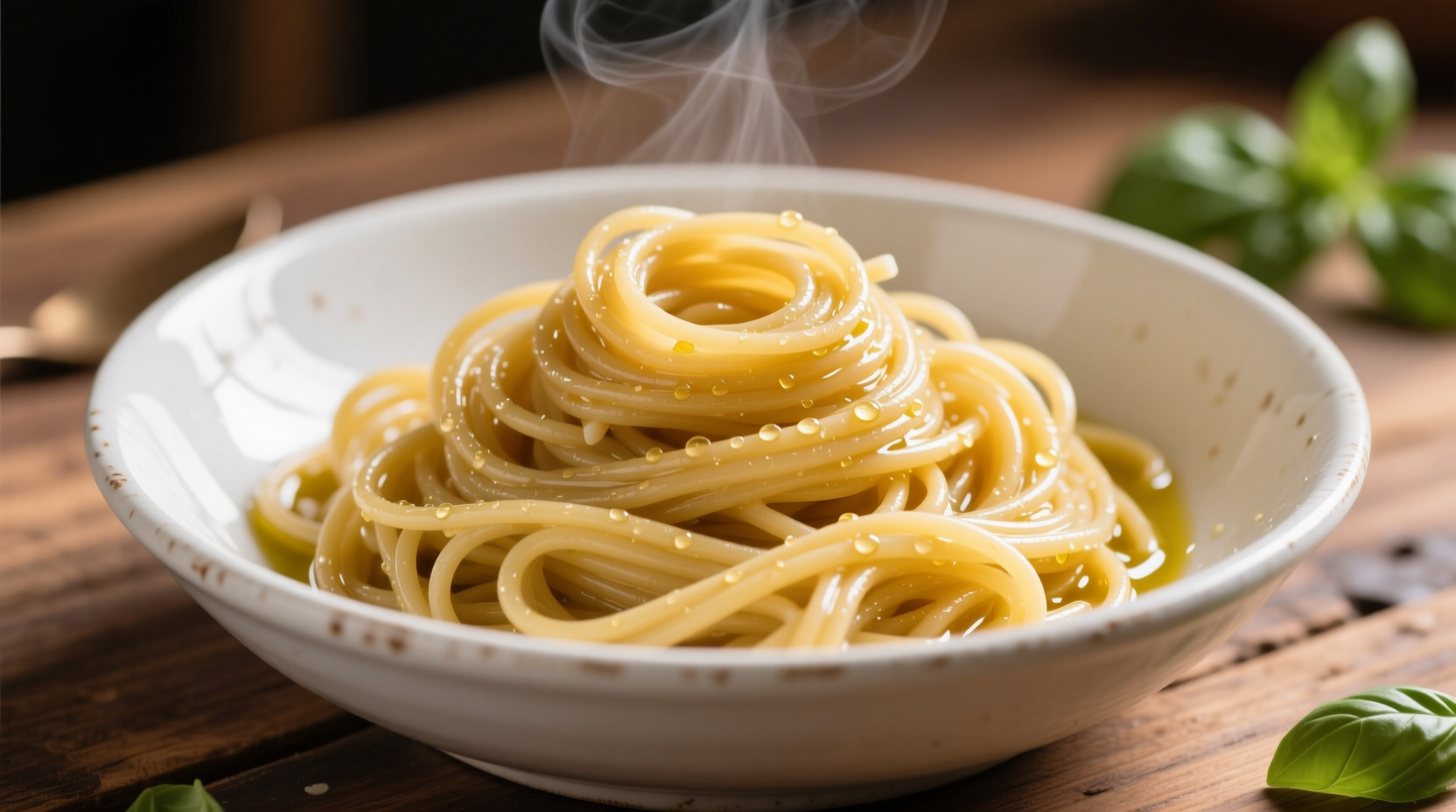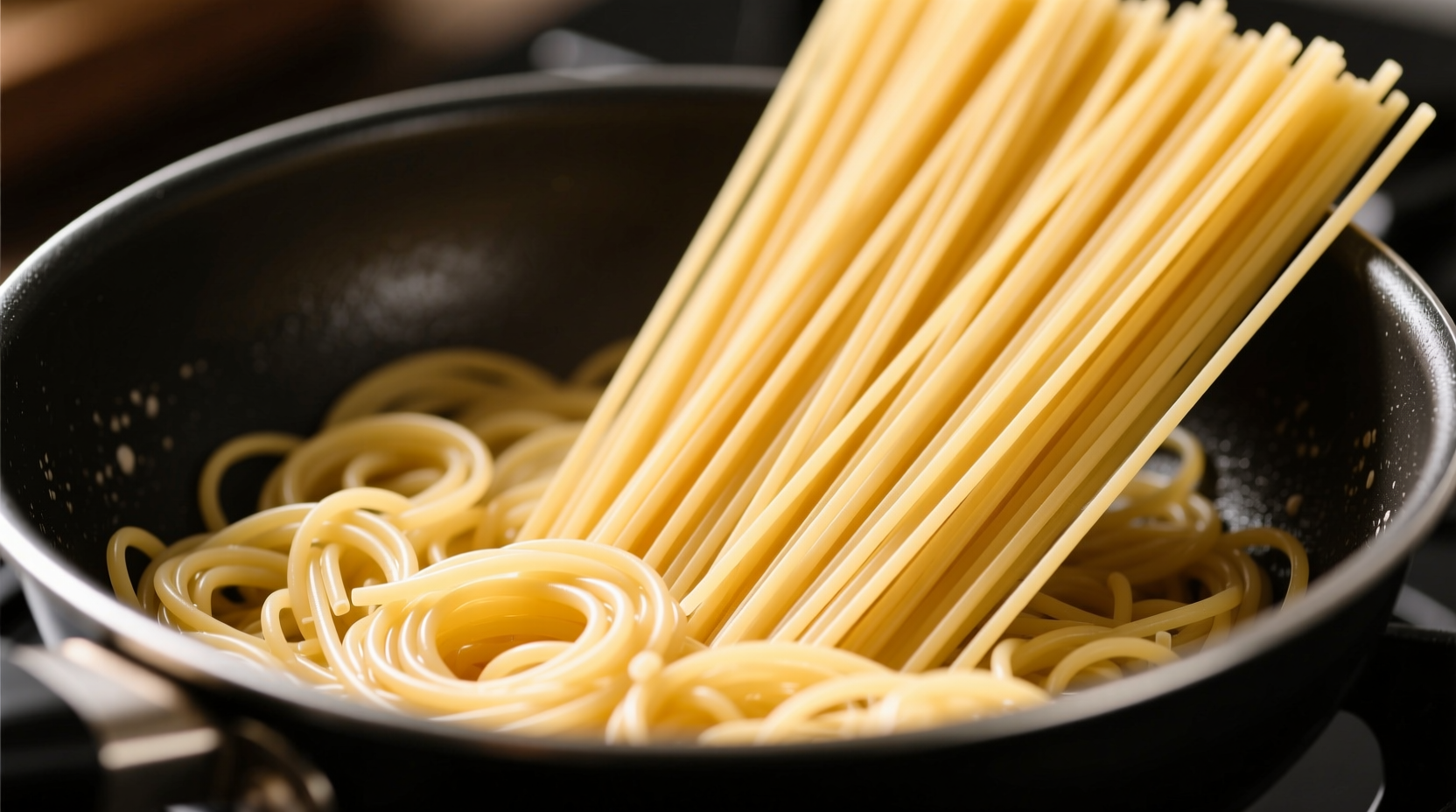Dried spaghetti typically takes 8-12 minutes to cook to al dente perfection, depending on thickness and brand. Start testing at 8 minutes by tasting a strand - it should be tender with a slight firmness in the center. Fresh spaghetti cooks much faster, requiring only 1-3 minutes in boiling water.
The Complete Guide to Perfect Spaghetti Cooking Times
Cooking spaghetti properly seems simple, but timing makes all the difference between restaurant-quality pasta and a disappointing meal. Get the timing wrong, and you'll end up with mushy strands or unpleasantly hard noodles. This guide provides precise cooking times backed by culinary science and professional chef recommendations.Why Spaghetti Cooking Time Matters
The perfect spaghetti texture—al dente in Italian, meaning "to the tooth"—requires precise timing. Undercooked spaghetti remains hard and chalky in the center, while overcooked pasta becomes mushy and loses its ability to hold sauce properly. The ideal cooking window is narrow, making accurate timing essential for the best results. According to America's Test Kitchen research, the starch gelatinization process that transforms hard pasta into tender strands occurs between 180-212°F (82-100°C), with the optimal texture achieved within specific time parameters. Their testing confirms that most dried spaghetti reaches al dente perfection between 8-12 minutes.Step-by-Step Spaghetti Cooking Process
Follow this professional chef-recommended method for perfectly cooked spaghetti every time:- Water preparation: Use 4-6 quarts of water per pound of spaghetti. This prevents sticking and ensures even cooking.
- Salting: Add 1-2 tablespoons of coarse salt once the water reaches a rolling boil. Never add salt to cold water.
- Adding pasta: Gently stir spaghetti into boiling water to prevent clumping.
- Timing: Start your timer immediately after adding pasta to boiling water.
- Stirring: Stir occasionally during the first 2 minutes to prevent sticking.
- Testing: Begin testing 2 minutes before the package's suggested time.
- Draining: Reserve 1 cup of pasta water before draining for sauce integration.
Spaghetti Cooking Time Variables
Several factors affect your spaghetti's cooking time. Understanding these variables helps you adjust timing for perfect results:| Spaghetti Type | Standard Cooking Time | Al Dente Test Time | Notes |
|---|---|---|---|
| Regular dried spaghetti (standard thickness) | 8-10 minutes | Start testing at 8 min | Most common type found in supermarkets |
| Thick spaghetti (spaghettoni) | 10-12 minutes | Start testing at 10 min | Requires longer cooking for proper texture |
| Thin spaghetti (spaghettini) | 6-8 minutes | Start testing at 6 min | Cooks faster due to smaller diameter |
| Fresh spaghetti | 1-3 minutes | Start testing at 1 min | Contains eggs and moisture, cooks much faster |
How to Test for Perfect Doneness
The only reliable way to determine if spaghetti is properly cooked is by tasting. Here's the professional method:- Use tongs to remove a single strand from the boiling water
- Run it under cold water briefly or let it cool for 10 seconds
- Bite into the strand: al dente pasta should have a slight resistance in the center
- Perfectly cooked spaghetti will be tender but still firm, not chalky or hard in the middle
Altitude and Other Environmental Factors
Your cooking environment affects spaghetti timing. At higher elevations, water boils at lower temperatures, extending cooking times. The USDA Food Safety and Inspection Service recommends adding 25% more cooking time for every 5,000 feet above sea level. Other factors that impact cooking time:- Pot size: Too small a pot concentrates starch, potentially increasing cooking time
- Water volume: Insufficient water lowers temperature when pasta is added
- Brand differences: Semolina quality and processing methods vary between manufacturers
- Desired texture: Some prefer softer pasta, requiring 1-2 minutes additional cooking
Common Spaghetti Cooking Mistakes
Avoid these timing-related errors that ruin spaghetti texture:- Not using enough water: Crowded pots lead to uneven cooking and longer times
- Adding oil to water: Prevents sauce from adhering to pasta (doesn't actually prevent sticking)
- Over-stirring: Can break delicate strands and release excess starch
- Guessing doneness: Relying on timers alone rather than tasting
- Overcooking while making sauce: Spaghetti continues to cook after draining if not immediately tossed with sauce
Pro Tips for Perfect Spaghetti Timing
Professional chefs use these techniques to ensure perfect spaghetti every time:- Set two timers: one for when to start testing, another for maximum cooking time
- Reserve pasta water before draining—it contains starch that helps emulsify sauces
- Finish cooking spaghetti in the sauce for 1-2 minutes to absorb flavors
- Remember that spaghetti continues to cook from residual heat after draining
- For meal timing, start sauce preparation before boiling water to synchronize completion

Troubleshooting Spaghetti Texture Issues
If your spaghetti is too soft:- You likely overcooked it by 1-3 minutes
- Reduce cooking time next time and start testing earlier
- Use a larger pot with more water for more consistent temperature
- You probably undercooked by 1-2 minutes
- Continue cooking in 30-second intervals, testing after each
- Ensure water was at a rolling boil before adding pasta
- Water volume was likely insufficient
- Stir more frequently during the first minute of cooking
- Break larger spaghetti nests apart before adding to water
Spaghetti Cooking Science
Understanding the science behind pasta cooking helps you master timing. When spaghetti hits boiling water, two processes occur simultaneously:- Hydration: Water penetrates the pasta, rehydrating the semolina flour
- Gelatinization: Starch granules absorb water and swell, transforming from hard to tender











 浙公网安备
33010002000092号
浙公网安备
33010002000092号 浙B2-20120091-4
浙B2-20120091-4